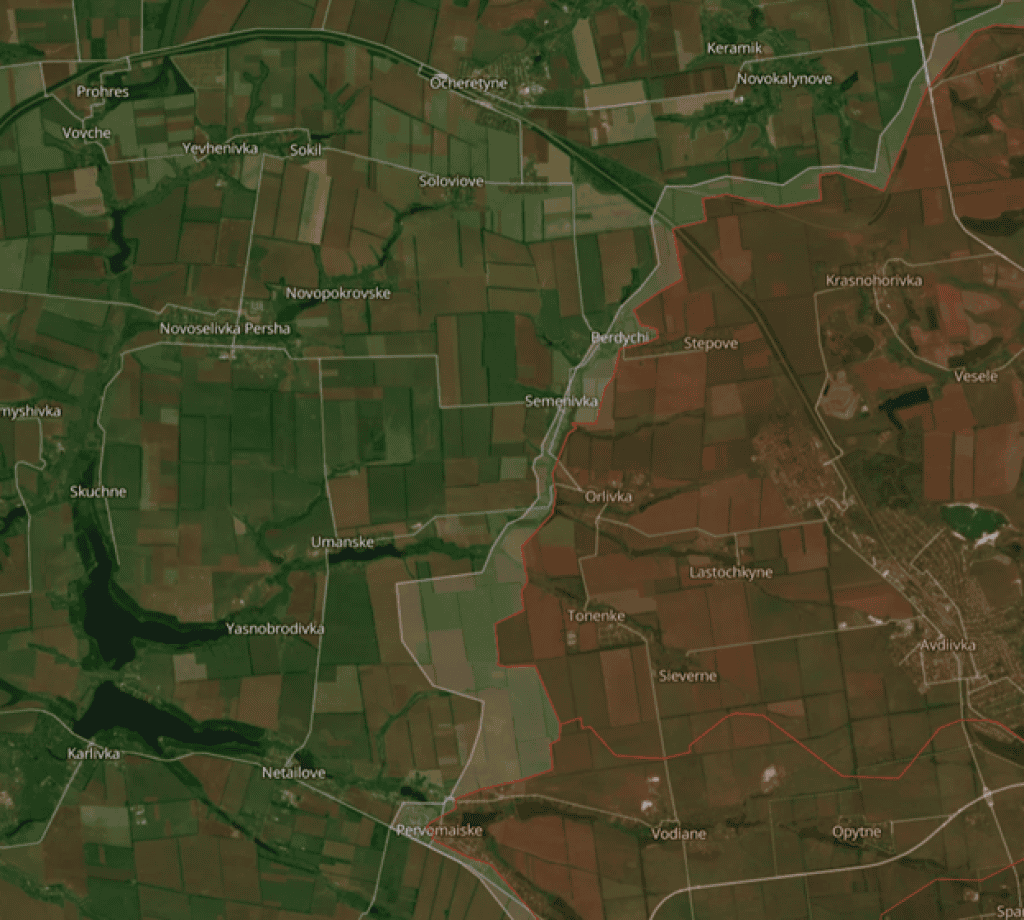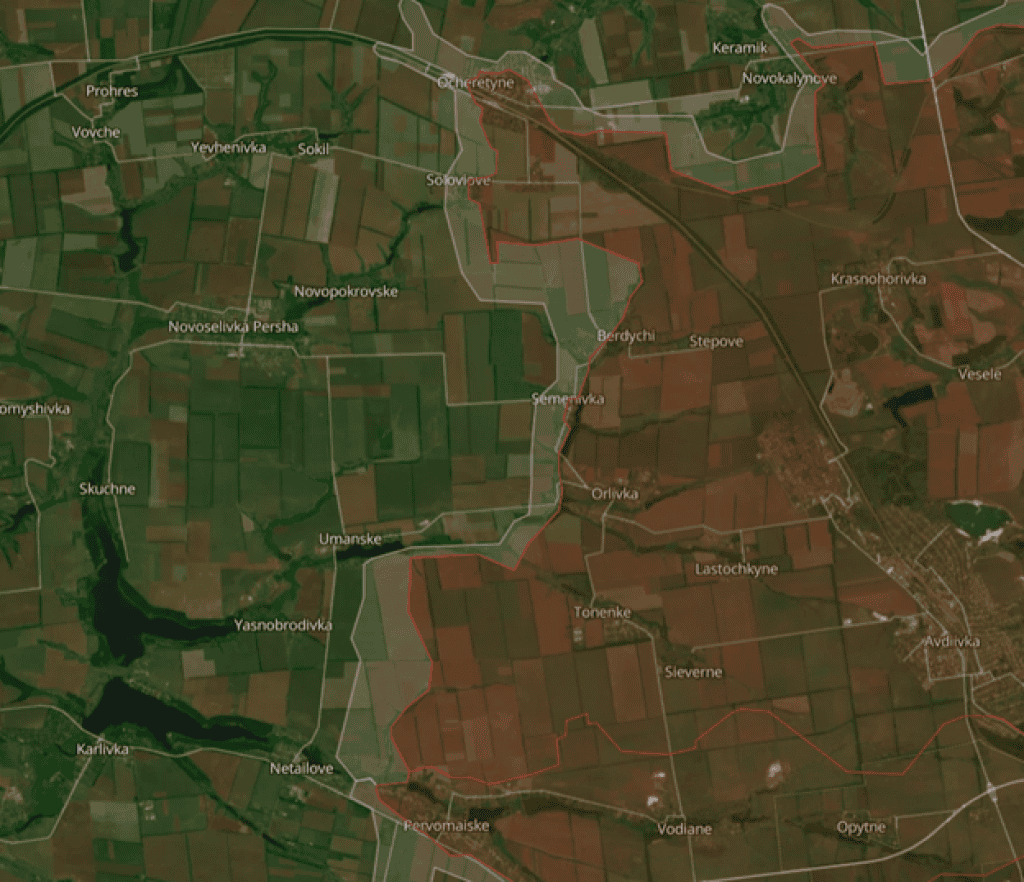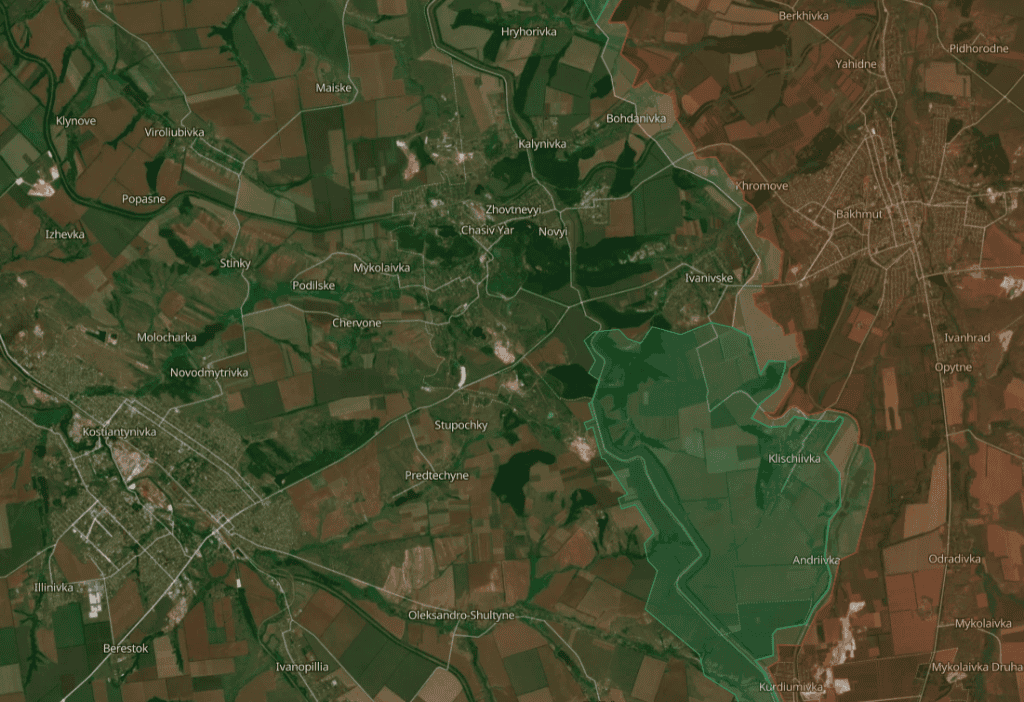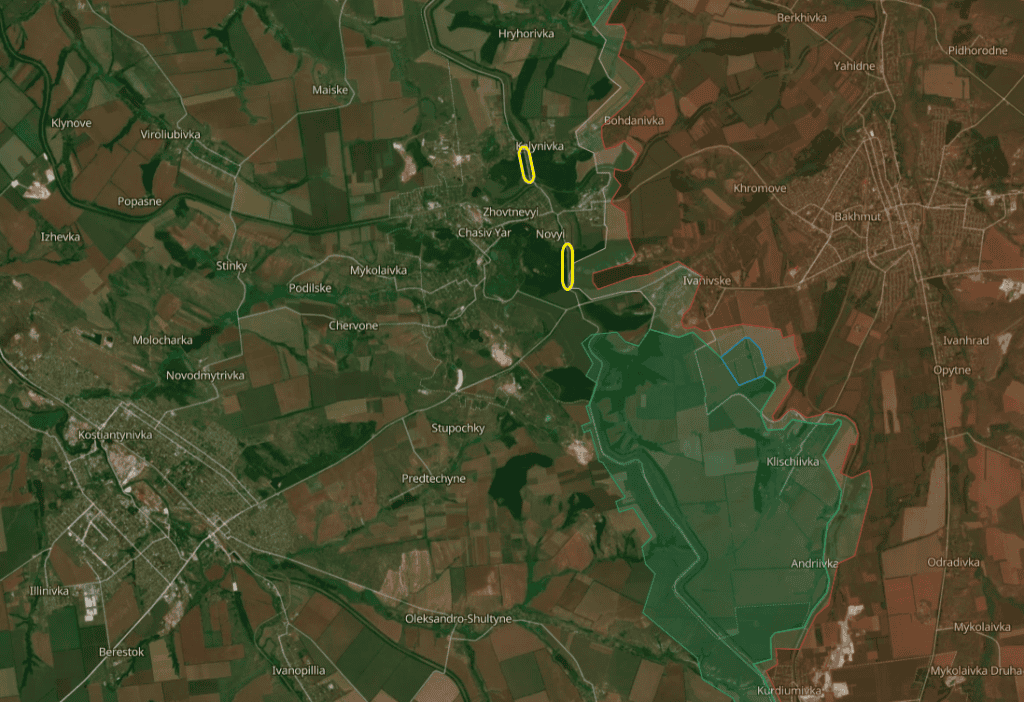The United States has begun rushing artillery shells and other aid to Ukraine following the passage of the long-delayed national security supplemental bill. For Kyiv’s embattled troops, this assistance cannot come soon enough. Russian forces are advancing west from the recently captured city of Avdiivka while also bearing down on the city of Chasiv Yar.
Avdiivka Area
In the weeks after Avdiivka’s fall in mid-February, Russia took a handful of low-lying villages west of the city. Russian progress then appeared to slow. But within the last few weeks, Moscow’s troops have made gains that, while still relatively small in scale, have put Ukrainian forces in a precarious position. The Russians ultimately aim to reach the city of Pokrovsk, an important logistical hub around 40 kilometers northwest of Avdiivka.
During the monthslong battle for Avdiivka, Ukraine failed to build a solid second line of defense behind the city. Russia has exploited this mistake along with Ukraine’s shell hunger and shortage of manpower — problems that in turn undermine Ukrainian morale. Russia has compounded its artillery advantage by using Lancet loitering munitions and Krasnopol laser-guided artillery shells to attack Ukrainian howitzers and tanks. The Russian Air Force has also continued to employ glide bombs in considerable numbers to grind down Ukrainian positions.
In early April, elements of Russia’s 9th Motor Rifle Brigade took Vodyane and Pervomaiske, two villages southwest of Avdiivka that had been partially occupied for well over a year. Meanwhile, Russian forces from the 90th Tank Division and 1st “Slavyanskaya” Motor Rifle Brigade advanced a few kilometers west of Tonenke, toward Umanske and Yasnobrodivka. This progress came at the cost of significant losses, including an estimated 77 vehicles knocked out near Tonenke as of April 6.
More important, in mid-April, Russian forces broke through to the outskirts of Ocheretyne, a town around 9 kilometers northwest of Avdiivka. The village and its environs sit on high ground, offering an advantage to artillery and first-person view (FPV) drone crews. Elements of Russia’s 30th Motor Rifle Brigade reportedly led the push to Ocheretyne. Troops from the newly formed 433rd Motor Rifle Regiment also participated. That unit, recently created on the basis of Russia’s 21st Motor Rifle Brigade, has been operating in the area since at least mid-March.


By pushing to Ocheretyne, Russia bypassed Ukraine’s defenses from Karlivka to Berdychi, where water obstacles complicate the attack. As an officer from Ukraine’s 47th Mechanized Brigade noted, Russia’s advances to Ocheretyne threaten Ukrainian forces to the south, particularly near Semenivka and Berdychi. Troops from Russia’s 74th Motor Rifle Brigade and 114th Motor Rifle Brigade are reportedly attacking in that area.
The officer accused Ocheretyne’s defenders — reportedly from the 115th Mechanized Brigade, among other units — of abandoning their positions. Elements of the 47th Brigade had to rush in to plug the gap when they were supposed to be rotating out after almost a year of tough fighting, he lamented. Ukraine also transferred in its 100th Mechanized Brigade (or elements thereof). This unit was recently upgraded from a territorial defense brigade and is likely still lightly equipped.
Russia soon pushed into Ocheretyne itself and has since taken most of the settlement. In addition, Russian troops, reportedly from the 35th and 132nd motor rifle brigades, advanced into Novokalynove, a village east of Ocheretyne. However, Ukraine’s 100th Brigade reportedly thwarted a subsequent Russian attempt to continue advancing westward from Ocheretyne toward the village of Prohres.
In the past few days, the Russians have widened their area of control near Ocheretyne. This can help them protect their flanks and safely push forward more troops and materiel. Russia took Novobakhmutivka, a village just south of Ocheretyne, on or around April 23. Troops from Russia’s 15th Motor Rifle Brigade and “ArBat” spetsnaz battalion (a volunteer unit formed in 2022, composed of ethnic Armenians) raised flags in the village the next day. Russian forces, reportedly from the 433rd Regiment, have since also taken the nearby village of Soloviove.
On April 24, a Ukrainian military spokesman said Russia had introduced reserves from its 55th Motor Rifle Brigade to try to achieve a breakthrough in the Ocheretyne area. How many reserves Russia still has left is unclear.
Chasiv Yar Area
Chasiv Yar is a small city in Donetsk Oblast with a prewar population of some 12,000. It lies just a few miles down the road from the bigger city of Bakhmut, which Russia took in May 2023 following a bloody, monthslong battle.
While small, Chasiv Yar is militarily significant. The city sits on high ground and offers a “door” to other, larger cities, as one Ukrainian soldier recently put it. These include nearby Kostyantynivka, an important logistical hub. And in theory, taking Chasiv Yar could help Russian forces eventually reach Kramatorsk and Slovyansk, the largest Ukrainian-controlled cities in Donetsk Oblast.
Chasiv Yar’s terrain is favorable to the defender. In addition to its advantageous high ground, the city is split by the Siverskyi Donets-Donbas Canal. While relatively shallow, the canal does impede vehicle movement. There are three bridges, which Ukraine could blow if need be.
Like in the Avdiivka area, however, Ukrainian forces defending Chasiv Yar are short on men and materiel. Russia enjoys a seven to one or even 10 to one advantage in artillery shells, according to Ukrainian troops. Meanwhile, Ukrainian soldiers are forced to defend frontline positions for 10 to 15 days straight, as there are few troops available to take their place.
Russian glide bombs have pounded Chasiv Yar and nearby towns, destroying buildings that serve as defensive positions. These bombs and other threats have forced Ukraine to relocate its medical stabilization point away from Chasiv Yar, making it harder for wounded troops to get emergency care. Russian Su-25 attack aircraft have also been active close to the city, highlighting Ukraine’s shortage of short-range air defense (SHORAD) systems. Using Krasnopol and Lancet strikes, Russia has taken out some of the SHORAD systems Ukraine does have, along with Ukrainian artillery pieces and tanks.
These factors have helped Russia make incremental gains in recent months, chiefly through small-unit assaults. The Russians typically attack at dawn or dusk, when Ukrainian reconnaissance drones cannot see as well but the Russian troops do not require scarce night-vision devices.
In February and March, forces from Russia’s 102nd Motor Rifle Regiment and 11th Air Assault Brigade took part of Ivanivske, a low-lying village southeast of Chasiv Yar. Beginning in early April, Russian troops — mainly from those units and the 98th Airborne Division — have advanced to the outskirts of Chasiv Yar’s “Kanal” microdistrict (the part of the city east of the canal). Meanwhile, elements of Russia’s 200th Motor Rifle Brigade, “Sever-V” Reconnaissance-Assault Brigade, 7th “Saint George” Reconnaissance-Assault Brigade, and “Espanyola” volunteer unit took Bohdanivka, a small settlement northeast of Chasiv Yar.
In part due to Russia’s gains, Ukraine earlier this month began reorganizing its 67th Mechanized Brigade, one of its most motivated units defending Chasiv Yar. The brigade is being stripped of its core personnel associated with the far-right “Right Sector.”
Looking forward, Russia will probably look to cross the canal at one or both of two gaps where there is no water barrier (circled on the second map below). The Russians may first need to capture the rest of Ivanivske and/or the eastern part of Kalinivka (formerly known as Kalinina), north of Chasiv Yar. Russia has made no observable progress in either area over the past two weeks, while Ukraine’s 92nd Mechanized Brigade has regained a little ground near Ivanivske.
In addition, Russia may also first need to retake Klishchiivka and Andriivka, villages southeast of Chasiv Yar that Ukraine liberated last year. So far, Russian forces — chiefly from the 83rd Air Assault Brigade and units from the 2nd and 3rd army corps — have made little discernible progress in that area.


Western Aid Can Solve Some Problems for Ukraine, But Not All
The arrival of U.S. aid should help alleviate Ukraine’s shell hunger, although Kyiv’s forces will likely remain out-gunned until at least 2025. In addition, Washington’s provision of additional Stinger man-portable air defense systems could help push back Russian Su-25s a bit.
Also working in Ukraine’s favor: The Russian military continues to struggle to mass forces and scale offensive operations above the company level. In late March, for example, elements of the 90th Division’s 6th Tank Regiment attacked west of Tonen’ke with forces that reportedly included 36 tanks and 12 infantry fighting vehicles. Russia had not conducted an attack at this scale since its failed attempt to encircle Avdiivka in October 2023. The 6th Regiment’s attack resulted in heavy losses at the hands of Ukraine’s 25th Airborne Brigade and 68th Jaeger Brigade. Likewise, in the Chasiv Yar area, Russia suffered significant losses during an April 4 attack that reportedly comprised up to 32 vehicles.
However, while U.S. aid can help reduce Ukrainian casualties, it cannot fix Kyiv’s underlying shortage of manpower. A new law on mobilization, which was passed earlier this month and will come into force in a few weeks, can help Ukraine address this gap. But mobilizing and training the fresh troops will take time.
In the meantime, Ukrainian defenders will need to make Russian advances as costly as possible, while personnel in the rear must construct a fortified defense in depth.







